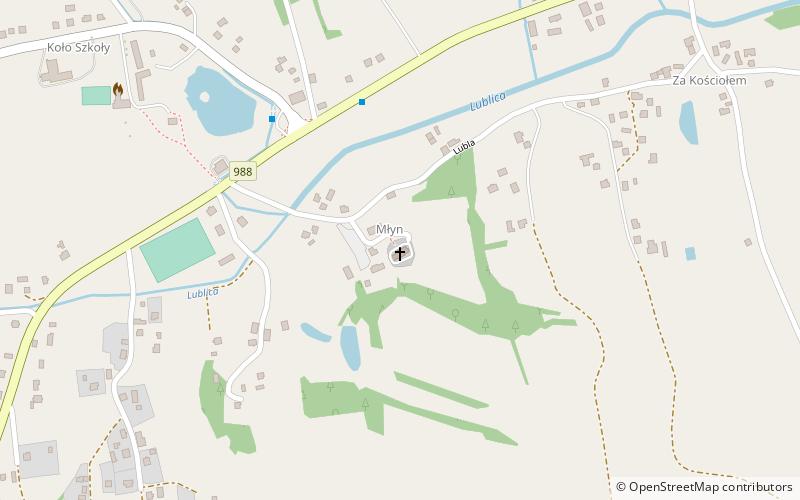Kościół pw. Świętego Mikołaja


Facts and practical information
St. Nicholas Church in Lubla - late gothic, wooden parish church of St. Nicholas in Lubla, built in the 15th century, rebuilt most probably around 1611, one of the most valuable wooden monuments of Strzyżów Foothills.
The rafter framing, ridge and clasp construction system used in the building is characteristic of the oldest wooden churches in southeastern Little Poland; the original orchid roof structure has survived. The object is located on the wooden architecture route of the Subcarpathian province.
The monument of group I was built by the Cistercian abbot Mikolaj Grot around the middle of the fifteenth century, oriented, of a log construction, on a stone foundation, with a post-frame tower. The externally boarded walls are reinforced with foxes. Previously, there was probably an access chapel on the hill called Holy Trinity.
The temple was renovated many times, especially in the years: 1838, 1862, 1928, 1945-1946.The tower was built in 1793 but was destroyed in August 1944. The baroque style altars come from the years 1709, 1769, the polychrome was renovated in 1880, 1929, 1968 and gilding in 1970. The old organ comes from the seventeenth century, the current 11-voice organ from 1962.
Particularly noteworthy inside the church are: Baroque crucifix on the rainbow beam from the 17th century, Rococo angels from the 18th century, two portals ending in a donkey's back from the turn of the 15th/16th century, Rococo pulpit from 1778, late Gothic paintings painted on board, Gothic painting Misericordia Domini probably from the 15th century, late Baroque confessional from the end of the 17th century, sculptures and paintings made from the 17th to the 19th century.
Kościół pw. Świętego Mikołaja – popular in the area (distance from the attraction)
Nearby attractions include: Szebnie concentration camp, Kolegiata Wniebowzięcia NMP, Kościół pw. Świętej Trójcy.



